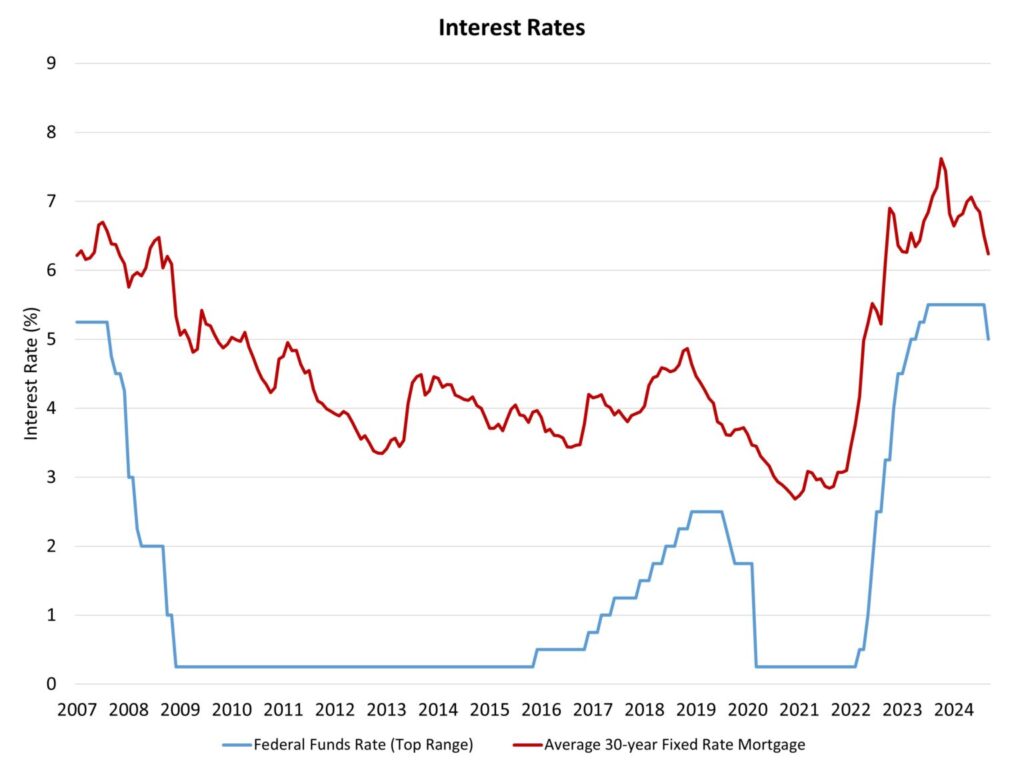The Fed’s Easing Cycle Finally Begins
Dr. Robert Dietz, NAHB Chief Economist
September 18, 2024
After its first post-COVID rate hike enacted more than two years ago, the Fed’s Federal Open Market Committee (FOMC) announced at the conclusion of its September meeting a significant reduction for the short-term federal funds rate. Tight monetary policy was undertaken to fight the worst bout of inflation in four decades. Today’s policy action marks the beginning of a series of rate decreases necessary to normalize interest rates and to rebalance monetary policy risks between inflation (risks decreasing) and concerns regarding the health of the labor market (risks rising).

The FOMC reduced its top target rate by 50 basis points from 5.5% (where it has been for more than a year) to a “still restrictive” 5%. This was a larger cut than our forecast projected. In its statement explaining the change of policy, the FOMC noted:
“Recent indicators suggest that economic activity has continued to expand at a solid pace. Job gains have slowed, and the unemployment rate has moved up but remains low. Inflation has made further progress toward the Committee’s 2 percent objective but remains somewhat elevated.”
With the above-noted progress for inflation, today’s action is the beginning of a series of federal funds rate cuts, which ultimately should decrease the top target rate to approximately 3% in the coming quarters, as the rate of inflation moves closer to the target rate of 2%.
The pace of these future expected cuts is somewhat open to debate. Fed Chair Powell noted in his press conference that if weakening conditions require it, the Fed can move quickly. The central bank can also move more slowly if inflation and macro conditions require a more gradual transition.
The Fed’s policy statement declared, “The economic outlook is uncertain, and the Committee is attentive to the risks to both sides of its dual mandate.” The Fed also noted, “In considering additional adjustments to the target range for the federal funds rate, the Committee will carefully assess incoming data, the evolving outlook, and the balance of risks.”
As stated, today’s policy move reflects that the Fed has shifted from a primary policy focus of reducing inflation to balancing the goals of READ MORE
